The main ingredients for curing meats vary between the styles and methods, but one ingredient is always sea salt. I’ve relished all styles of cured meats for decades and want to share some insights.
Salt is in all meat curing; spices, herbs, and other ingredients can be used. Sweeteners are another main ingredient.
It all depends on which technique you’re using.
Curing meat has quite a broad definition; some people think it’s only charcuterie or salumi.
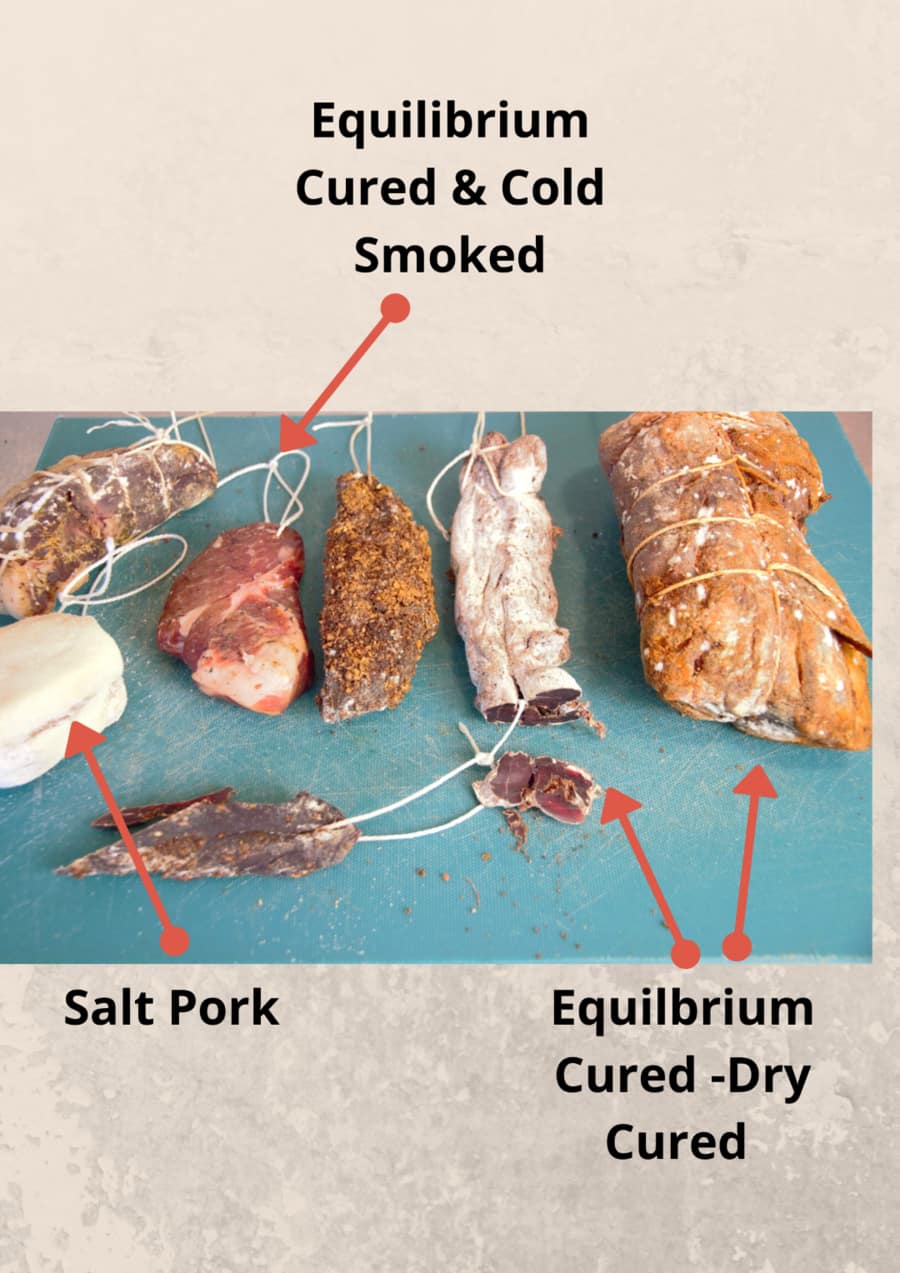
I like to think of it like any project that involves salting or wet brining the food and, in some styles, not preserving it like hot smoking.
If you want to check out the mega world of cured meats, I wrote a post about common and exotic types of cured meat; if you want to see the list, check it out here.
Pastrami, prosciutto, or bacon – these are made very different; the main ingredient in all of them is still salt.
So, I’ll summarize the different curing and smoking projects and provide an overview of some of the main ingredients I use below as well.

Main Ingredients for Different Meat Curing
Sea Salt
It inhibits meat, holds moisture, or removes it depending on the desired outcome.
It also helps form the dry pellicle protein layer on the outside (beneficial) for the smoke vapor, when smoking to adhere more effectively, is there anything salt can’t do!
Salt is anti-fungal and reduces unwanted bacteria. How does salt do this with meat curing and seasoning? I have a video below that covers.
Curing Salt
I’ll go into more detail below, but for cold smoking and dry curing, many home producers and commercial use curing salts.
It’s easy to think these are the same curing salts and sea salt – although curing salts mainly contain sea salt. They are very different – since nitrate/nitrite is added to curing salt.
Many of these variations listed below have DIFFERENT AMOUNTS/RATIOS of nitrates/nitrites; please ensure you have a sound idea of what you are doing with these products.
| Curing Salt Type | Country of Origin |
|---|---|
| Prague Powder #1 | United States |
| Prague Powder #2 | United States |
| Saltpeter (Potassium Nitrate) | Various |
| InstaCure #1 | United States |
| InstaCure #2 | United States |
| Celery Juice Powder | Various |
| Pink Curing Salt #1 | Various |
| Pink Curing Salt #2 | Various |
There are many brand names across the globe relating to ‘curing salt’ with a mixture of nitrate/nitrite. This is only a sample of some of the most common.
Please note that curing salts in food preparation and preservation may have regulatory restrictions in some countries, and their composition can vary.
It’s essential to use curing salts in accordance with local food safety guidelines and regulations.
The choice of curing salt may depend on the specific requirements of the recipe and methodology. This is not regular cooking; this is meat curing (link to charcuterie/dry cured meats category list on this site).
I will elaborate on the two main types of curing salt mixtures and note this represents a small amount of an overall total salt cure for a meat project.
Pink Curing Salt No. 1
I’ll elaborate on these 2 curing salts, because they are most widely used in curing meat across the globe.
This is salt with a small amount of sodium nitrite.
This makes sure the meat doesn’t grow harmful bacteria. It’s a common ingredient in bacon you buy in the store. The Equilibrium Curing guidelines are to use 0.25% pink curing salt to the total weight of the meat that is being cured (per 2 pounds/1 kg of meat, use 2.5 grams).
So, as you can imagine, you’re dealing sometimes with less than a few grams depending on how much meat you are curing. So accurate scales that get down to 1 or 2 decimal places are what I find most useful.
Pink-curing salt goes by many names due to the different marketing involved. These include Instant Cure, Prague Powder & Colorquick. Quite a few others, too.
Examples of Pink Curing salt No. 1 uses:
- bacon
- pastrami
- jerky
- corned beef
(Curing projects generally under 30 days, and projects like bacon that will be cooked)
Pink Curing Salt No. 2
No. 2 is used for dry curing projects lasting over 30 days, including salami. It has the addition of sodium nitrates. Over time, it’s broken down into sodium nitrite. It works the same way to keep the meat safe from harmful bacteria.
Examples of Pink Curing Salt No. 2
- prosciutto
- pancetta
- bresaola
- lonza/Lonzino
- pepperoni dry-cured salami or picante salami
- dry cured salami in general (though I don’t for homemade)
Both these curing salts are very bright pink so they don’t get confused with regular salt because they could make you very sick and should be kept well out of reach and a very safe place home.
Main Ingredients for Different Styles of Meat Curing
I’ll cover these styles of meat curing below:
- Cold Smoking
- Dry Cured Meat
- Direct Hot Smoking
- Indirect Hot Smoking
- Jerky & Biltong
Cold Smoked Meat (topic link)
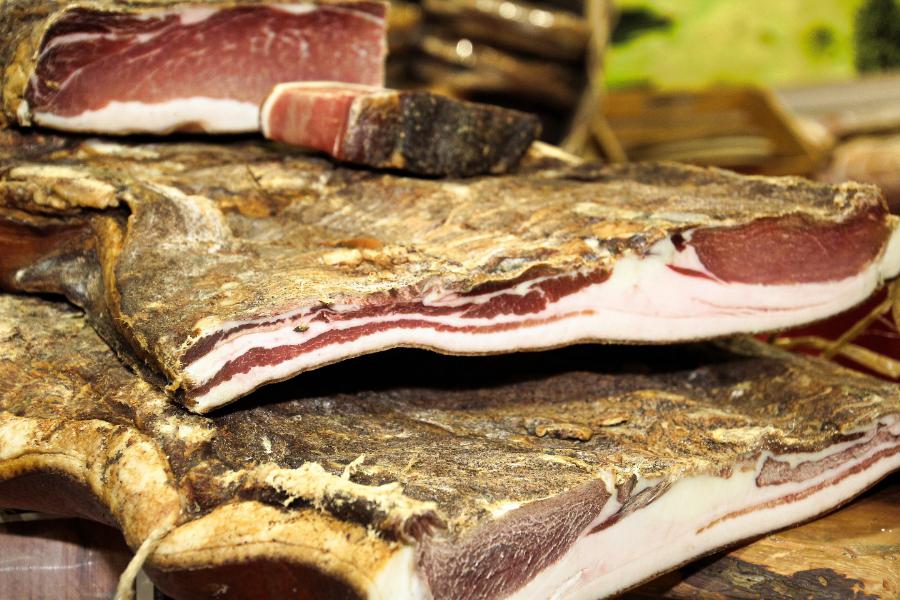
All cold smoked meat is salt-cured, either with a dry or wet cure.
Cold-smoking meat is all about fully curing the meat and then drying it out with smoke in a conducive
Cold-smoked meat is cured, and dried meat has cold smoke around it for flavor and preservation.
Dry Cured Meat (topic link)

Again, of course, salt is the main ingredient, but dry-cured salami has a few other interesting bits and pieces.
For many classic dry-cured salamis – garlic, pepper, and red wine are used. These also carry specific properties that are beneficial to preserving and as flavor!
Anti-microbial benefits and pH/acidity effects mainly.
I have learned to use a bacteria inoculation; one familiar brand is
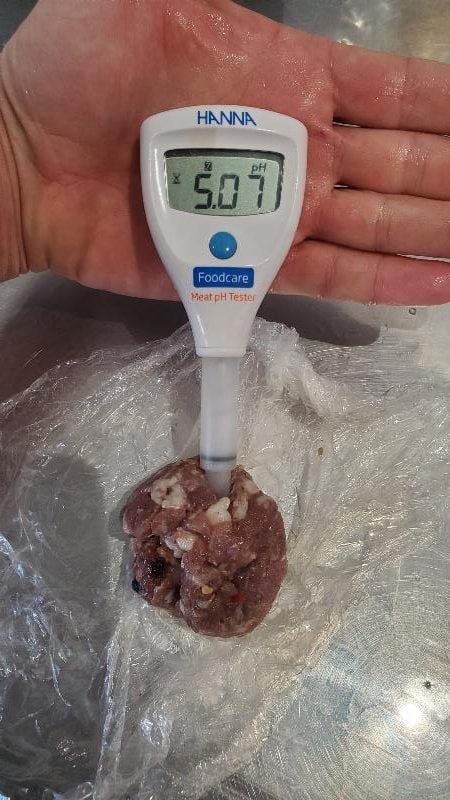
Pink curing salt No. 2 is often included as part of the ingredients for salami. That will take more than 30 days. It speeds curing, changes color, and protects from botulism. Nitrates & nitrites are common commercially; they protect from botulism. That is why salami-making is considered an advanced meat-curing project as well.
Start mold cultures are another tool to help manage moisture removal on the surface of the dry-cured meat. Or, use inoculated internally for salami to lower increase acidity / lower pH.
This site has a lot of information about dry curing meat, here is the guide page to get you on the right track.
Direct Heat Hot Smoking (topic link)
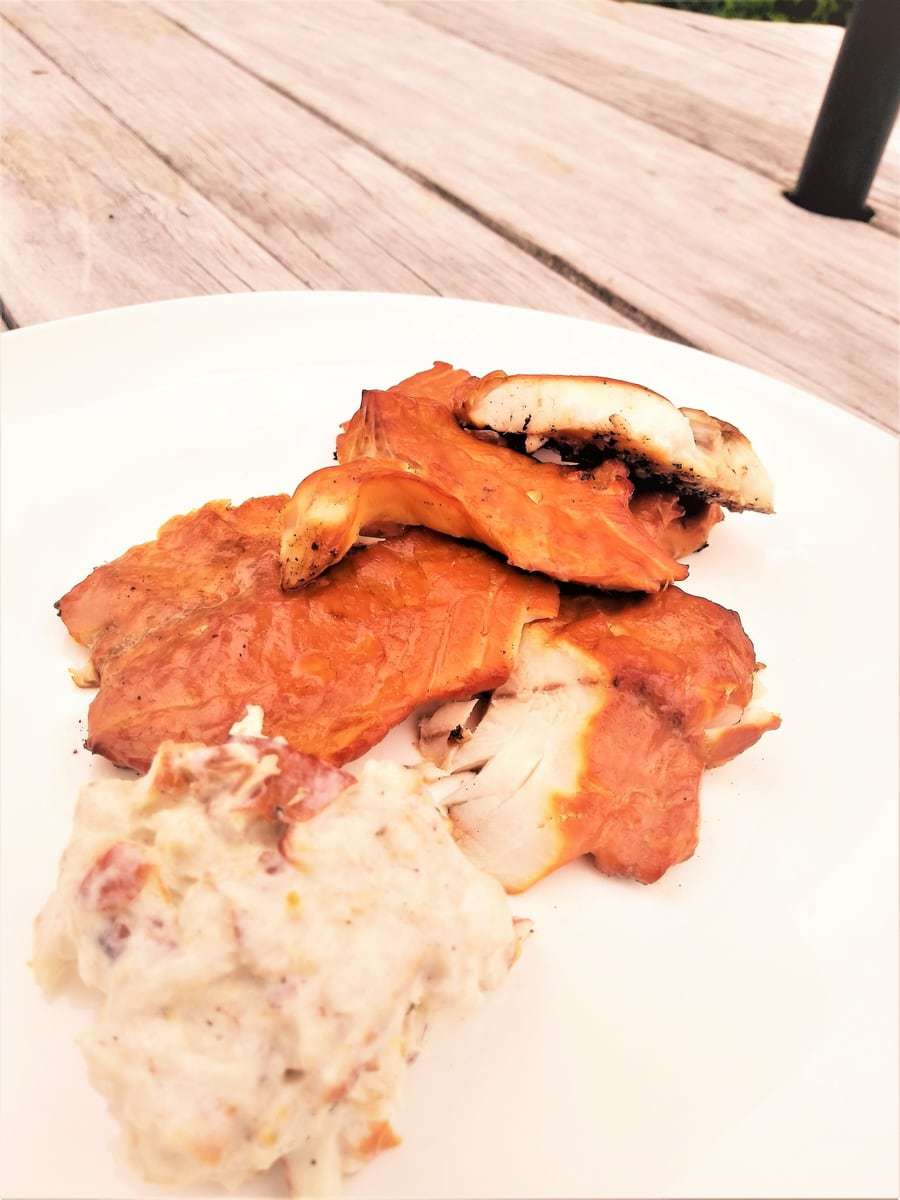
So I define this as using direct heat to cook the meat, with wood in between for smoking. There is a rack that keeps the meat and wood apart slightly. My portable smoker is in action; it’s great for camping and fishing.
With the under-an-inch fish fillets above, it took only 4 hours brining and 1 hour to form a pellicle from hot smoking for just 12 minutes (pellicle is a key step for hot smoking, here is an article all about it).
Again, salt being the main
Indirect Hot Smoking (topic link)
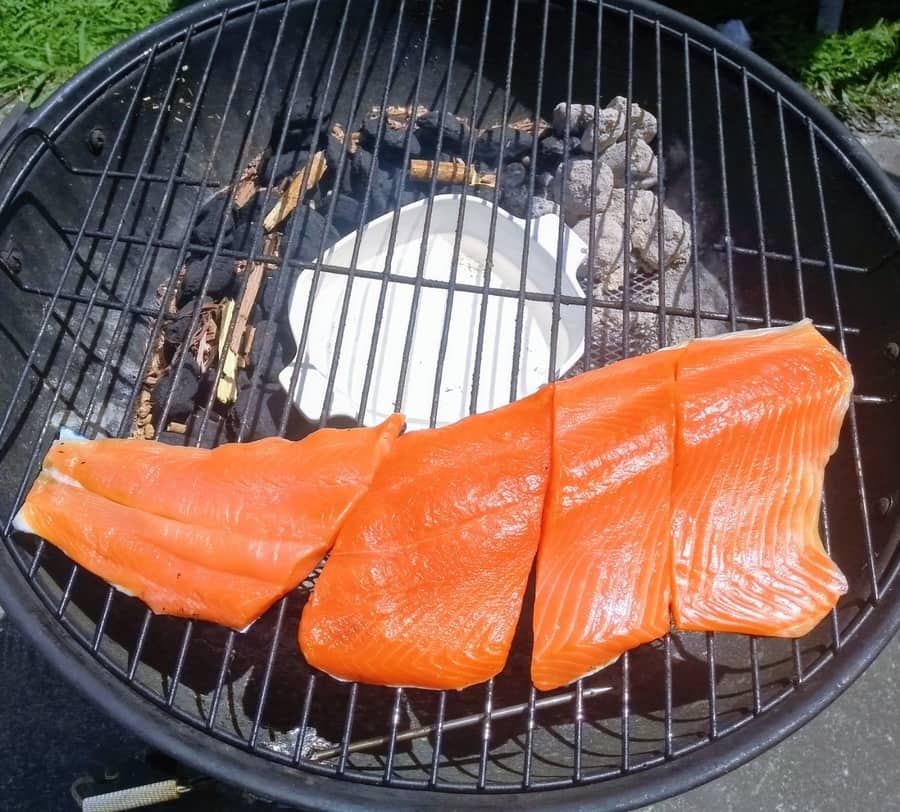
Using salt curing again is a longer form of hot smoking. It is often used in different styles for kippers and other oily fish across the United Kingdom. It’s developed over many hundreds of years.
A much deeper smoked color and flavor is produced from this long and stead style of hot smoking.
Although Low and Slow Hot Smoking is indirect hot smoking, it’s not cured meat. Salt curing doesn’t occur. It’s seasoned with a rub, then slow (baked with soaked) cooked with smoke surrounding it at a lower temperature. Often rendering a large amount of fat in the meat cut.
Jerky & Biltong
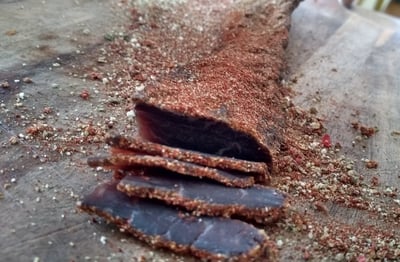
Some of my favorite protein snacks involved a little bit of meat curing.
These styles have different categories because acidity with vinegar and some jerky cooking are used for preservation and sterilizing. It’s not used in any other style of meat curing.
When you look at something like jerky or South African biltong, it is very similar; it is a super healthy high-protein, very low carbohydrate, low salt & low sugar (definitely commercial brands will vary greatly)
For the simplest classic version of South African-style biltong, which is incredibly tasty, all you need is sea salt, malt vinegar, and coriander seeds.
Acidity is part of the preservation and flavor of Biltong, not jerky.
Often, jerky is cooked at a low temperature, whilst biltong is denatured with vinegar, salt-cured, and then air-dried in 3-6 days.
If you want a quick rundown on making simple jerky and biltong, check out this post here.
Tips for Other Ingredients – Difference Meats
I just thought I’d mention some ingredients that match certain cured meats that are favorites other than salt and sugar.
Salt Cured Pork
Pork always goes with sweetness, so adding maple syrup to things like bacon does help enhance flavor.
I have done some experimenting with Asian-style spices like allspice or this classic five-spice blend.
It’s incredible what can work; I did a whiskey dry cured cold smoked bacon, which turned out good for a hunting trip.
Salt Cured Fish
Gravlax (lox and many other names for similar products) is a classic cured meat dish with salmon; its origins are in Scandinavia. But all you do is put the salmon and a salt tray using the salt box method. Dill is also the classic spice that’s used.
You leave it for 24 hours, take it out, then slice it and try it to check saltiness. If it’s too salty, quickly soak it in fresh water for 30 minutes.
Thinly slice and enjoy; there is also a popular beetroot-style gravlax that rocks.
Salt Cured Venison/Beef
Juniper berries, garlic, Rosemary, and toasted black pepper are probably some of my favorite flavors to peer up with red meat.
Salt Cured Jerky/Biltong
When it comes to jerky or biltong, other flavors from the classic I like to use are smoked paprika, Chile, cumin, and garlic.
What is a Meat Cure Made Of?
Meat cure can mean several things. Generally, pink curing salt is included, and for meat cure, there are two types: one for short-term under 30 days of curing, and this is for cured bacon. The other primary meat cure is designed to limit microbes so the meat can be cured for over 30 days.
What is the most essential ingredient for curing meat?
Salt, specifically sea salt or kosher salt without additives or anti-caking agents, is the primary ingredient for curing meat. Depending on the curing method, it plays a critical role in preservation by inhibiting harmful bacteria, retaining moisture, or aiding in drying the meat.
What are the differences between Pink Curing Salt No. 1 and No. 2?
Pink Curing Salt No. 1 contains sodium nitrite and is used for curing projects under 30 days, such as bacon or corned beef. Pink Curing Salt No. 2 includes sodium nitrate, which gradually converts to sodium nitrite over time, making it ideal for long-term curing projects like prosciutto or salami.
Can curing meat be done without nitrates or nitrites?
Yes, curing meat without nitrates or nitrites is possible, though it may limit certain styles and preservation methods. For example, traditional methods like dry curing or cold smoking can use only salt and natural processes, but they may require careful monitoring to ensure safety.
Thanks for reading and feel free to add any comment or question below.

Tom Mueller
For decades, immersed in studying, working, learning, and teaching the craft of meat curing, sharing the passion and showcasing the world of charcuterie and smoked meat. Read More
